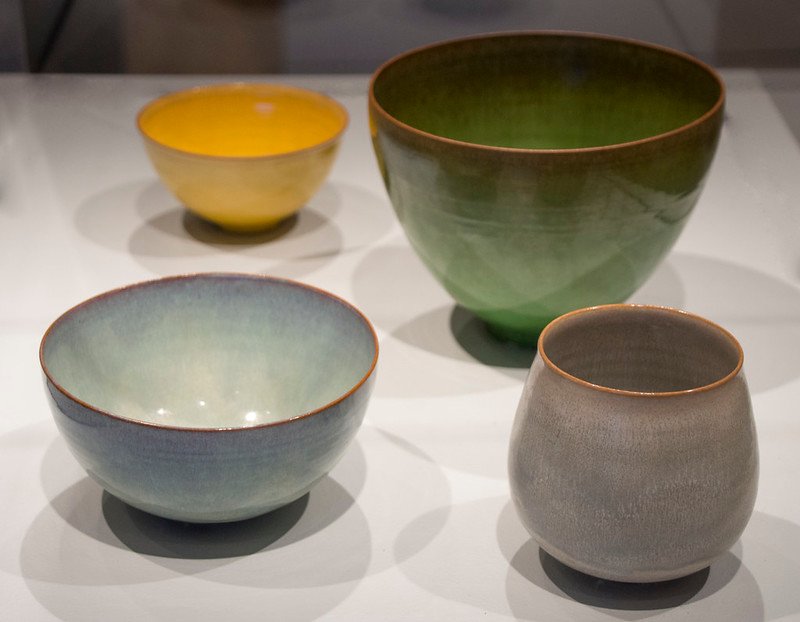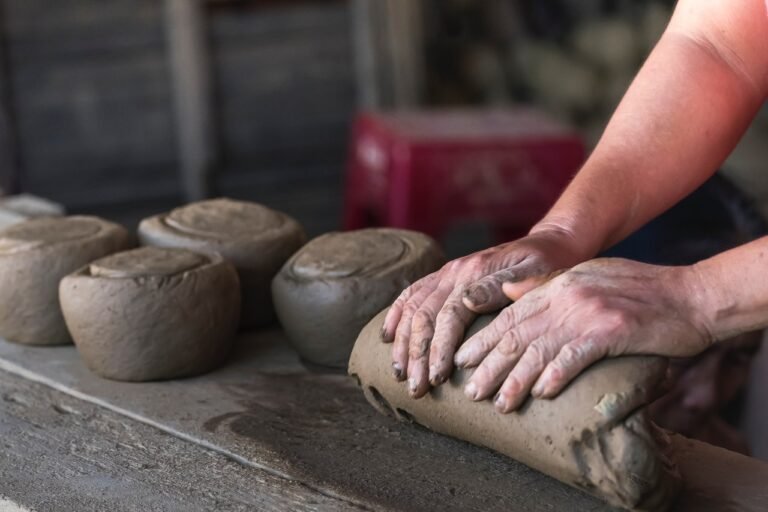How to glaze the bottom without ruining the kiln? Easy Checklist!
Glazing is a way to coat and add colors to pottery items. A glaze can make the pottery look beautiful in many different ways, such as matte, shiny, vibrant, opaque, smooth, or clear. In practical terms, glazing made pottery waterproof and safe for daily use, especially those related to food, by adding a layer of glaze and fusing it in a high-temperature kiln. Pottery can also be glazed without a kiln using a pit firing to get the right temperatures.
However, glazing the bottom of pottery cannot be the same way as the pottery body part because hot glaze may burn to the kiln shelf. Applying glaze too thick on the bottom can give tension which leads to breaking. Hence, how to glaze the bottom of pottery?
The bottom of pottery can be glazed in a variety of three different ways. Firstly, use a wadding technique that adds refractory material to the bottom of the pottery. Placing pottery in the kiln upside down and using ceramic stilts are the other alternatives that can be utilized.
Three basic ingredients in glazing are silica, alumina, and flux. Typically, a three-layer is good enough for glazing the body of pottery but for the bottom part, it must stick to only one thin layer.
I will explore the most effective techniques for glazing. I will discuss underglaze bottom pottery and places where there should never be a glaze. I will also explain the concept of pottery glazing.
Can You Underglaze The Bottom Of The Pottery?
Underglaze is widely used in pottery to produce patterns and designs before covering them with glaze. The surface of pottery is improved by this technique because it creates character and visual depth. It is recommended to underglaze the bottom of the pottery to prevent the pottery from sticking to the shelf of the kiln. However, beware of thick underglaze as it will cause problems.
Underglaze is different from glaze, which consists of ground-up materials suspended in water. When the ingredients are heated, the ingredients melt together. When fired, the underglaze consists of glass-forming ingredients, which melt.
The difference between glaze and underglaze is that the underglaze contains about 10% of an underglaze flux.
As underglaze will not stick, the techniques and methods used will affect any outcomes. Sometimes, the color under the underglaze may transfer to the bottom of the pot and kiln shelf as well.
Underglaze can be done in a variety of ways, including brushing, spraying, carving, dipping, and using sponges. By doing so, the clay will be protected.
The bottom of the pottery can and should be underglaze before it gets to the glaze phase due to non-waterproof reasons which will make it hard to clean. They will be pretty difficult to wash which leads to the spreading of bacteria and fungus to other kitchenware. This may create a bad impact as it is harmful to the food that we consume.
Friction can be decreased by underglaze the bottom of pottery as underglaze makes it smoother and easy to slide but slippery and easier to break.

How Do You Glaze The Bottom Of a Plate or Pottery?
Basic ingredients used in glazing can be categorized into three which are :
- glass formers
- refractories
- fluxes
The wadding is an important part of pottery because it is not only part of the bottom but also the rim. In this process, the pot is kept upright in the kiln and its stability and balance are maintained. Glazing of the bottom will only be possible if the wadding lifts the bottom over the shelf.
Wadding can be done in several different forms such as calcium wadding and alumina wadding. Wadding might leave dots on the wadding once it has been placed, but the decoration of the pottery can conceal them.
Upside-down glazing is a simple method for glazing the bottom of pottery or plates. In this technique, the outer edges of pottery are left unglazed, then rims and glazes are applied with wax resist. The unglazed pot can fuse with the kiln shelf and allow the bottom of pottery to fuse well with the glaze.
Rims that remain unglazed will not have the same smooth texture as glazed pottery. Yet, the unglazed rim can always be covered with various decorations.
Examples are pottery from China ancient that uses metal such as gold, alloy, and silver to cover the unglazed rim of pottery.
Since it requires additional stuff in the kiln, the Ceramic Stilts technique is more complex than wadding. The pot or plate is placed on the stilts and will protect the pot from contact with the shelf kiln during the firing process.
In a similar way to the wadding, it will leave a mark but can be covered and repaired with grinding and decoration.
Glazing at the bottom of pottery makes your piece tougher and eye-pleasing as it serves to color and decorates. Glazes provide compressive strength for the bottom of pottery.
After glazing, let the pottery completely dry before any firing process starts because some glazes may drip during the firing process right after glazing.

Where Should You Never Glaze?
It is possible to glaze pottery, particularly body parts, but to glaze bottom parts, precautions and proper techniques are required. The bottom of pottery is the most crucial part when it comes to glazing.
The glaze on the bottom of pottery is considered one of the challenging parts of the glazing process. This is because any glaze left behind on the bottom of pottery will stick to the kiln shelf when firing the pot. This leads to damages.
It is never advisable to glaze the bottom of pottery alone as glaze melts into the liquid glass and hardens when cooled. It may stick to the kiln shelf and result in a lot of damage to the shelf.
All glazing should be done one quarter from the kiln shelf and wiped with a wet sponge. The bottom should not be glazed together with the other parts.
Before glazing the bottom of pottery, applying wax can prevent the bottom from any damages. Applying the wax requires mixing it with water and applying it using a brush, foam, or old sponge.
Applying the wax resist should be done carefully as it may get to another part of the pottery. Wax resists help make the bottom smoother and prevent glaze from sticking. When the glaze wipes off and the wax burns off inside the kiln, the wax resistance will be destroyed.
The most effective wax resist is Green Amaco Wax Resist, which is available in pints and gallon jugs. It is a premium type as it does not peel easily or fall off when using another type of glaze when doing the decoration process.







